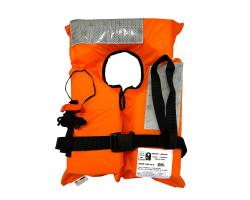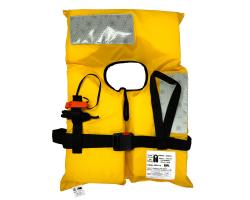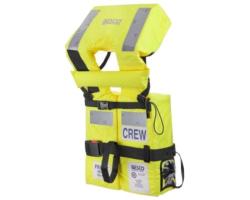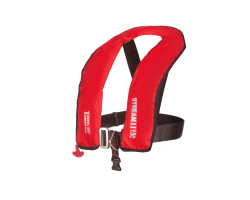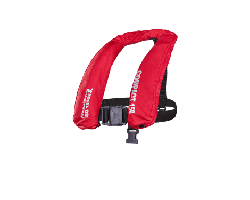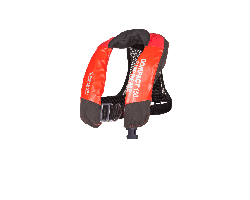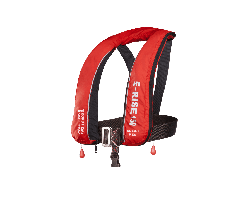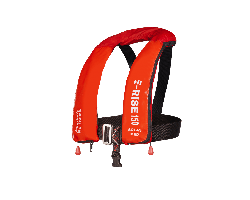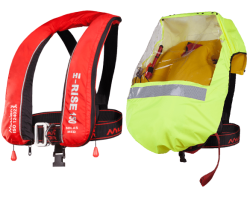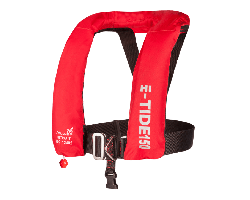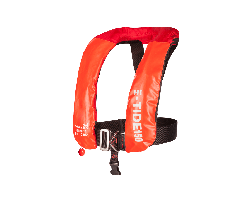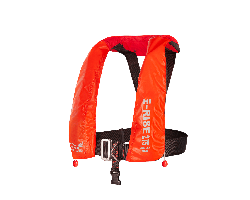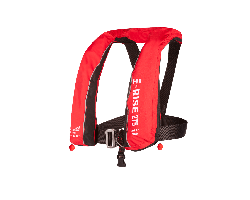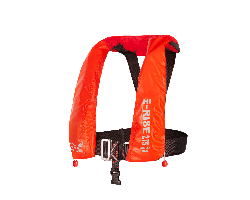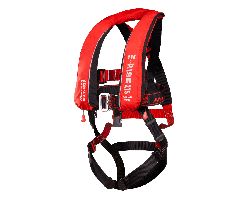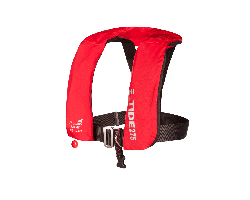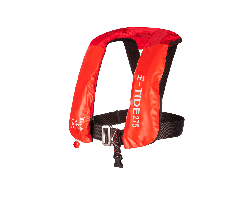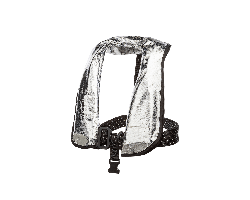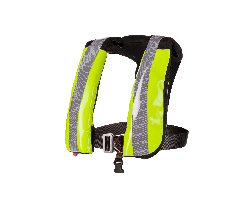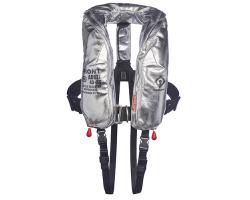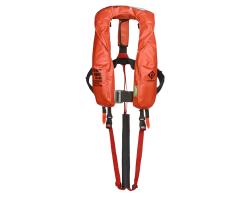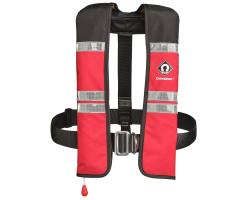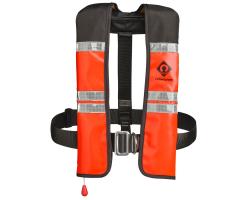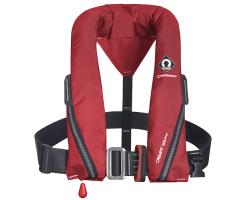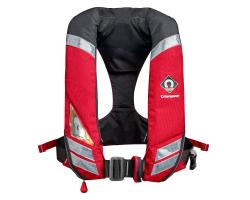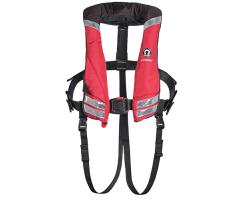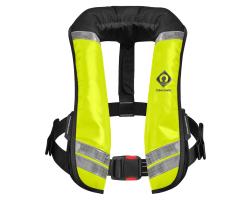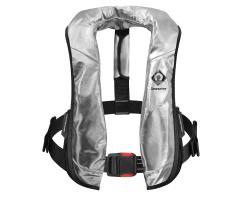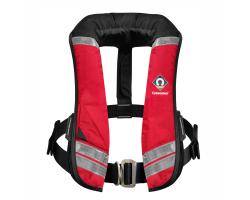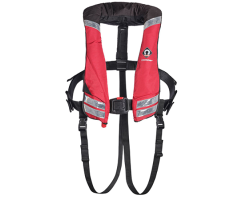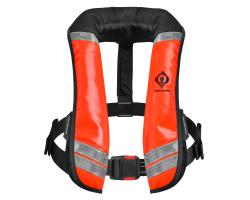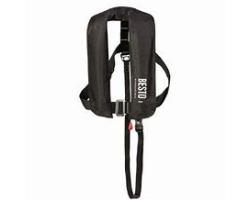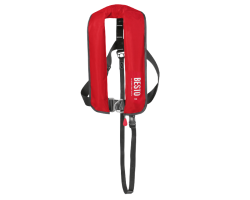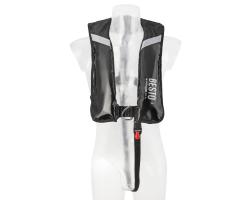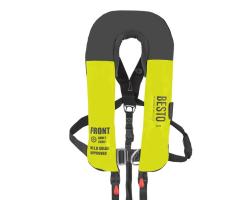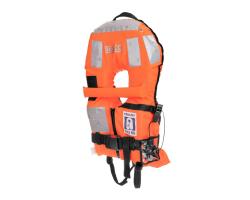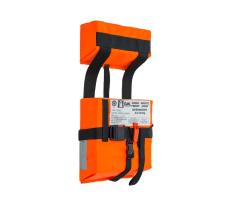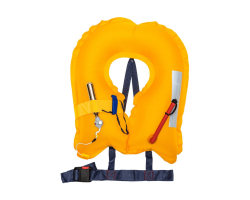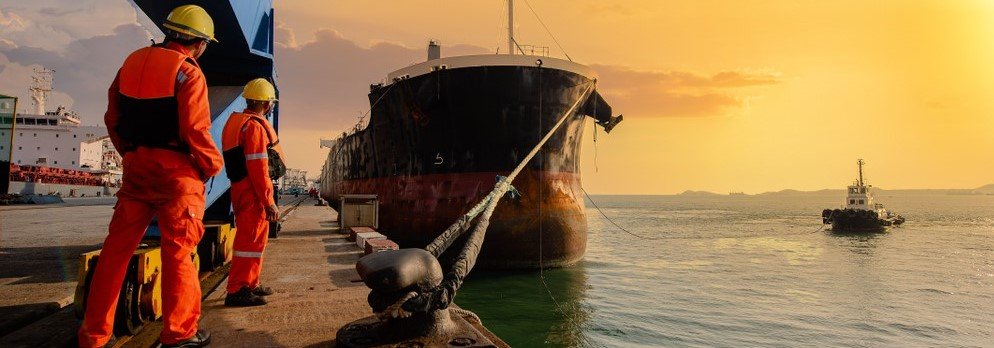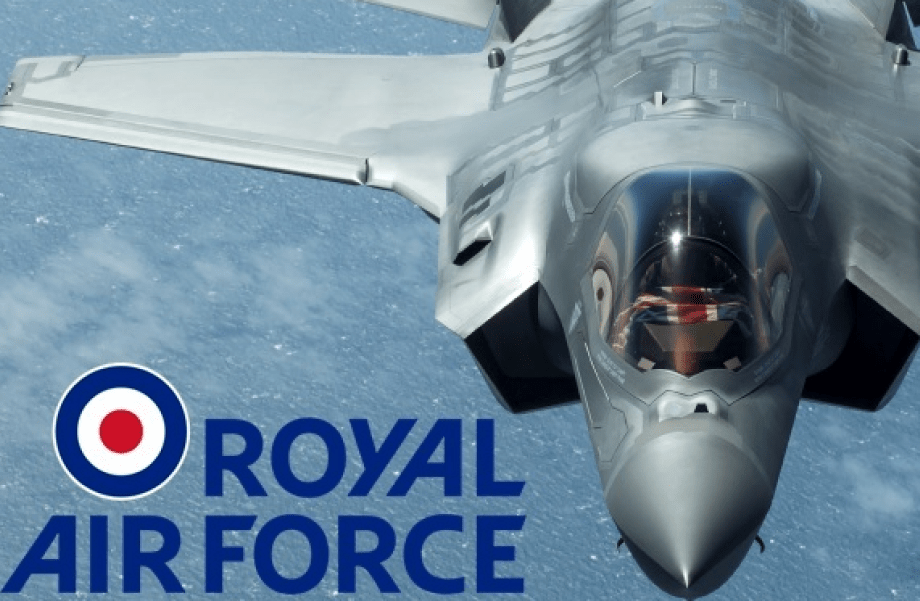Buying a Lifejacket in 2024: Frequently Asked Questions

LIFEJACKETS - FREQUENTLY ASKED QUESTIONS
Question: What is the difference between a lifejacket and a buoyancy aid?
Answer: Personal Flotation Devices (PFDs) are available in two main types: lifejackets and buoyancy aids. Both are classified as essential for water safety. Lifejackets excel in providing full support to the wearer, effortlessly rotating them face up even if unconscious. With superior buoyancy, lifejackets ensure a greater distance between the waterline and the airway (mouth freeboard), making them ideal for swimmers and non-swimmers alike.
On the other hand, buoyancy aids offer additional buoyancy without fully supporting the wearer in the water. While they don't rotate individuals into a face-up position, they provide valuable support, reducing fatigue during water activities. It's crucial to note that buoyancy aids are recommended for competent swimmers, and their use should be restricted to situations where assistance is readily available.
Every buoyancy aid meets the 50N standard approval, but certain designs incorporate a higher actual buoyancy for specific purposes. Specifically, 70N buoyancy is recommended for activities like whitewater paddling and sports involving fast-running water.
Whether you're an avid swimmer or a novice around water, wearing a Personal Flotation Device (PFD) is paramount for safety. When considering which lifejacket to buy, prioritise features like full in-water support, automatic rotation, and enhanced buoyancy. This ensures a higher level of safety, especially for those moments when quick and effective support is crucial.
Make a splash in water activities with the right lifejacket that guarantees optimal safety and buoyancy. Explore our selection to find the perfect PFD for your needs. Remember, safety first – always wear a suitable PFD when on or near the water.
Find the ideal lifejacket for you and make waves confidently!
Question: How does a lifejacket work to keep me safe?
Answer: The primary objective of a lifejacket is to safeguard the wearer's airway. Lifejackets achieve this by facilitating the rotation of the wearer into a face-up position and elevating mouth freeboard. The conspicuous lifejacket bladder, coupled with reflective tape, enhances visibility in the water, significantly improving the chances of being noticed. All lifejackets come equipped with a whistle, a valuable tool for attracting attention in emergency situations.
Lifejackets with a rating of 150N (Newtons) and above are furnished with a standard load-bearing lifting becket, facilitating the lifting of the casualty to safety. Additional features, such as a lifejacket light, spray hood, and emergency beacon, can prove immensely beneficial. These optional extras further contribute to protecting the airway or increasing the likelihood of a prompt recovery.
Ensure your safety on the water by choosing a lifejacket that prioritises airway protection and visibility. Explore our range of lifejackets, complete with essential features and optional extras, to enhance your overall water safety experience. Invest in the right lifejacket to maximize your chances of a safe and swift recovery in any situation.
Question: What are Newtons?
Answer: A Newton is a metric unit of force used to measure the buoyancy provided by a lifejacket. The numerical value indicates the amount of buoyancy, with higher numbers signifying greater buoyant force. To support a 1Kg weight, a force of 9.8 Newtons is required. One Newton is equivalent to 0.225lb. For instance, a 150N adult lifejacket like the Crewsaver XD 150N can support an individual with an in-water weight of 15.3Kg or 33.7lbs.
Whilst a 275N adult lifejacket like the Mullion 275N Ultrafit offers a minimum of 27.5kg buoyancy per lifejacket, making it the ideal choice for individuals facing extreme conditions or wearing bulky PPE clothing—such as the Mullion Aquafloat Superior Suit. This recommended product ensures sufficient buoyancy, addressing concerns that may impact the wearer's buoyancy and the self-righting capacity of less robust life jackets.
Understanding the Newton rating of a lifejacket is crucial in selecting the right level of buoyancy for your specific needs. The correlation between Newtons and buoyancy ensures that you can make an informed decision to maximise safety and support in water-related activities. Explore our range of lifejackets, each clearly indicating its Newton rating, to make a well-informed choice that aligns with your safety requirements.
Question: What is the difference between a 150N and a 275N Lifejacket?
Answer: A 275N lifejacket provides greater buoyancy compared to a 150N lifejacket. Opting for a higher buoyancy level, such as 275N, is recommended in situations where assistance is not readily available, or the wearer anticipates wearing additional or heavy clothing. In remote areas or when heavy clothing, like foul weather gear, is worn, air trapped between the clothing layers can impact the rotation and stability of the lifejacket in the water. The extra buoyancy of the 275N (or 290N) lifejacket effectively addresses and overcomes these factors, ensuring enhanced safety for the wearer.
Question: Is training required to properly use my lifejacket?
Answer: In emergencies, there's no time for on-the-spot equipment learning. I.C. Brindle strongly recommends that, in a controlled environment, you and your crew, staff, or friends, or family members take the time to acquaint yourselves with the lifejacket to understand its performance before deploying it in an emergency. This crucial familiarisation process encompasses proper fitting, understanding the lifejacket's features, and comprehending their functionality.
Wearing your lifejacket correctly not only ensures optimal in-water performance but also enhances overall comfort. It's essential to note that undergoing in-water familiarisation training may necessitate replacement rearming parts to ensure your lifejacket is ready for use again.
Prioritise safety by proactively engaging in lifejacket familiarisation sessions in a secure setting. Learn about correct fitting, features, and functionality to maximise the lifejacket's effectiveness during emergencies.
Don't forget that replacement rearming parts may be required after in-water training sessions to maintain the readiness of your life-saving equipment—we can also provide this with our I.C. Brindle lifejacket servicing!
Keep safety at the forefront and be prepared for any maritime emergency with I.C. Brindle.
Question: Are there different types of lifejackets?
Answer: In addition to lifejacket buoyancy measured in Newtons, these safety devices exhibit variation in their activation methods, presenting both manually activated inflatables and those with automatic inflation features. Lifejackets tailored for manual activation demand heightened awareness regarding their type and suitability for specific activities. For instance, inflatable gas lifejackets are equipped with a manual override, necessitating familiarity with its location for emergency use.
Moreover, specific lifejackets employ distinct firing mechanisms, exemplified by automatic lifejackets and Hammar lifejackets. Both mechanisms trigger upon contact with water. Notably, the Hammar mechanism incorporates a safeguarding valve, allowing water entry only after a certain amount of time upon immersion. This design enhances resistance to exposure during severe weather conditions. Conversely, the standard automatic trigger, inherently resistant to rainfall, relies on the lifejacket cover for wave action resistance.
The Hammar mechanism operates via water pressure activation, ensuring non-inflation in the face of significant wetness. Conversely, an automatic trigger activates upon direct water contact (not water pressure). While offering splash resistance, it will engage under substantial wet conditions.
Understanding these distinctions proves vital when selecting the appropriate lifejacket mechanism, aligning with the expected exposure to water and weather conditions—with this knowledge of your lifejackets and life-saving equipment, you will be prepared for an emergency situation should one arise.
Question: Will all my lifejackets have the same features? Such as a lifejacket light, sprayhood, PLB or wipe-clean cover?
Answer: There's a wide range of features among different lifejackets and lifejackets models, with not all of them featuring standard elements such as a light or spray hood. It's imperative to carefully assess the specific inclusions of each lifejacket in your possession.
Certain lifejackets boast a wipe-clean bladder design, simplifying the removal of dirt, oil, and grease from the outer cover. This characteristic proves exceptionally advantageous for individuals working in industrial or challenging environments. It ensures that the lifejacket remains in optimal condition, well-suited for extended use in demanding settings. Understanding the distinctive features of each lifejacket is key to enhancing its durability and performance across various conditions.
Some lifejackets are equipped with a Personal Locator Beacon (PLB), transmitting an emergency frequency signal. This feature aids rescue teams in locating both the wearer and the lifejacket during emergencies.
Furthermore, specific lifejackets come with a high-visibility yellow sprayhood, offering protection against water ingress and spray when worn in aquatic conditions. The integrated face window panel not only boosts visibility but also includes breathing holes, effectively preventing asphyxiation for enhanced safety.
You may come across SOLAS-approved lifejackets, which are mandated to incorporate a diverse range of features to comply with specific regulations and undergo rigorous testing for quality assurance. These lifejackets adhere to Maritime PPE Standards and are designed according to SOLAS/MED lifejacket requirements. Take, for instance, the BESTO 220N SOLAS Twin Chamber Auto Harness Lifejacket; which includes various features such as a wipe-clean cover, an integrated automatic harness, an adjustable crotch stop, an MK5 Automatic Inflator, a SOLAS Safety Light, and a buoyancy of 220 Newtons.
Question: How do I wear my lifejacket?
Answer: Avoid wearing anything over your lifejacket, as it can disrupt its performance and may impede inflation during an emergency. For instance, if you're working in a tough offshore marine environment and need to wear an immersion or flotation suit, make sure the lifejacket is the last thing you put on over your torso. Don't cover it with anything so it can do its job properly if you need it. This precaution is essential for maintaining the lifejacket's effectiveness and ensuring it can inflate as intended during critical situations.
At I.C. Brindle we will always prioritise the proper use and positioning of your life-saving equipment for optimal safety.
Question: What Lifejacket is right for me?
Answer: The suitability of a lifejacket varies based on the specific activity or application, whether it's for leisure, commercial use, or work in an industrial environment. Factors like the nature of potential dangers, the equipment involved, and individual characteristics such as body frame, weight, height, and age all play crucial roles in determining the most appropriate lifejacket.
For leisure activities, a lifejacket may be chosen with features that enhance comfort and ease of movement. In contrast, commercial applications or industrial environments might demand lifejackets designed for specific hazards or equipped with additional functionalities. In this instance, you may go for a lifejacket such as the Mullion Compact 150 Supreme Lifejacket. Which is a popular lifejacket model amongst boat owners who are looking to ensure safety during leisure activities, such as sailing or watersports.
Considering the type of danger anticipated is vital – whether it involves water, chemicals, or other potential risks. The equipment in use, such as heavy tools or machinery, may influence the choice of a more robust and durable lifejacket. For example, the Seacrewsader Crewsaver 275N 3D Wipe Clean Lifejacket. This lifejacket provides an easy-to-clean solution and is specifically designed to safeguard workers on offshore platforms and vessels, adhering to SOLAS regulations. With a focus on both reliability and comfort, the Seacrewsader 275N 3D is the ideal choice for those in need of dependable safety equipment.
Moreover, personal factors like body dimensions, weight distribution, height, and age contribute to selecting a lifejacket that fits securely and ensures optimal buoyancy. Therefore, it's essential to carefully assess all these factors to choose a lifejacket that aligns with the specific requirements of the activity, ensuring both safety and comfort. For example, within a Passenger Lifejacket range, such as the Besto SOLAS EC 2010 Lifejacket, which comes in a range of size options from infant 0-15kg to Adult 43kg+. You can also opt for size option within other models the Eval SOLAS - L.S.A Code Compact Foldable Foam Passenger Lifejacket.
If you are still unsure, please talk to us directly, we'd be delighted to chat to you about your lifejacket perferences, or any specifications you need!
The I.C Brindle Code of Safety.
Answer: As globally recognised supplier with a legacy spanning over 25 years, providing marine and land-based rescue and safety gear. We take pride in delivering certified life-saving products that adhere to the highest standards, including MED, Red Ensign, MCA, USCG, Bureau Veritas, and SOLAS. Our extensive product range, exceeding 1500 items, is a testament to our commitment to professionalism and assurance.
At I.C. Brindle, we go beyond being a supplier; our mission is to foster a global culture of land and marine safety. We ensure that our life-saving products meet the rigorous criteria set by esteemed organisations such as MED, MCA, USCG, Bureau Veritas, and SOLAS, with a documented history of effectively saving lives.
Navigating the vast array of lifejacket options can be challenging. If you're struggling to find the right lifejacket tailored to your specific requirements, rest assured that I.C. Brindle understands the uniqueness of each situation. Our experienced professionals are dedicated to providing comprehensive support throughout the entire process.
Whether you need guidance on selecting the right lifejacket, assistance with a more specialised requirement, or answers to frequently asked questions, our team is here for you. W e’re here if you need it Contact Us. or call us at +44 (0) 1202 657814
- Your friends at I C Brindle & Co Ltd.






